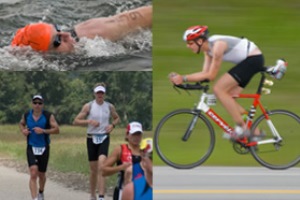Regarded as one of the most difficult endurance sporting events in the world, the Ironman Triathlon motto is “Swim 2.4 miles! Bike 112 miles! Run 26.2 miles! Brag for the rest of your life.” Since 1978, when the first Ironman Triathlon was held in Kona, on the Big Island of Hawaii, dozens more have been added worldwide, increasing the opportunity for athletes around the world to compete. Needless to say, the Ironman triathletes who qualify for one of these races need to be at the top of their game, and chiropractic care is a major asset to keeping them in the competition.
The Ironman Triathlon World Championship is held every year in Kona, and most athletes qualify for a slot by being among the top finishers in their age bracket at one of the worldwide competitions. Chiropractors are always on hand to treat injuries and remove obstacles that may impede an athlete’s performance. A range of techniques may be used, including standard chiropractic adjustments and the Active Release Technique (ART). ART therapy is a form of soft tissue therapy that is especially useful for repetitive stress injuries that cause muscle adhesions, a common form of injury in triathletes.
Lisa Walker, a woman in her early 50s from Edmonds, WA, credits Florida chiropractor Dr. Dan with allowing her to compete in the World Championships. “I met Dr. Dan in the ART tent the week before the race. I had issues with both shoulders and my right foot. Dan fixed me up so well I went back two more times just to see him about the issue. I really appreciated what he did for me because it gave me back my confidence in both swimming and my run. This was my 4th time in Kona and I ended up with a 7th place AG finish, a personal record (PR) and a Boston marathon qualifying time by 11 minutes on the run.”
Chiropractor Sebastian Gonzales from Huntington Beach, CA, also travels to the World Championships in Kona each year to be on a team that treats over 600 athletes with ART. Gonzales says “Most of these athletes train from 10 to 20 hours a week up until this race and many of them are highly prone to overuse training injuries, and a 24 hour plane fight doesn’t help! Some athletes come in with minor issues and others come to the Active Release tent with hopes of being completely fixed the week of the race.”
Gonzales added “Granted we all have great success with fixing training injuries in our respective practices, but the value of ART lies in the performance and injury prevention aspects. Within minutes, a provider can watch you run and figure out potential issues with gait leading to decreased race performance. I tell my athletes if you want a PR, you need to incorporate specific soft tissue care like ART into your regimen.”

